21+ Sample Weekly Meal Planners
-
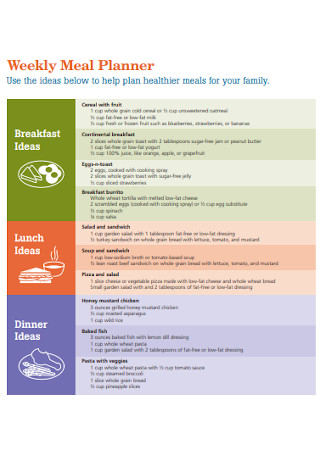
Weekly Meal Planner Format
download now -
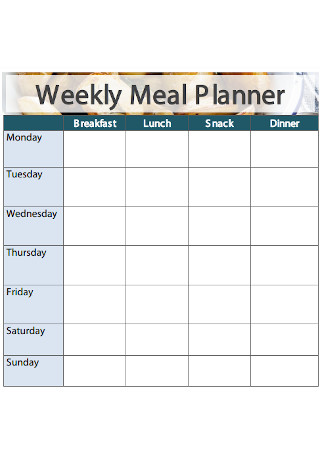
Sample Weekly Meal Planner
download now -
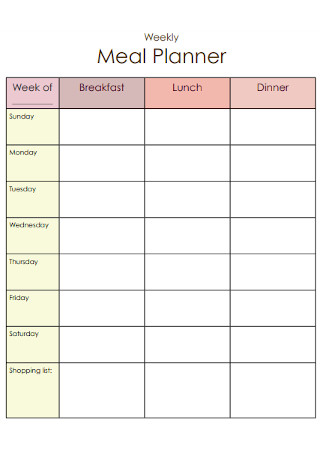
Sample Weekly Meal Planner
download now -
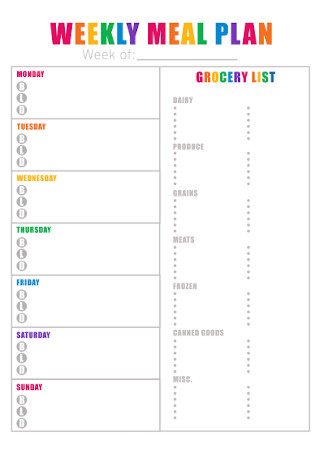
Weekly Grocery Meal Planner
download now -

Weekly Kitchen Meal Planner
download now -
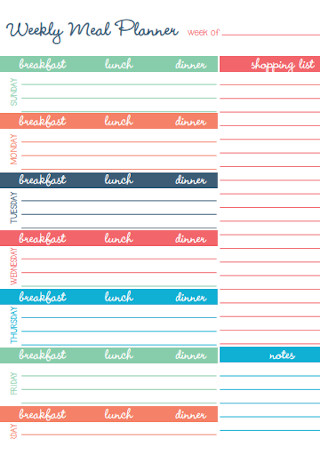
Weekly Meal Planner Format
download now -
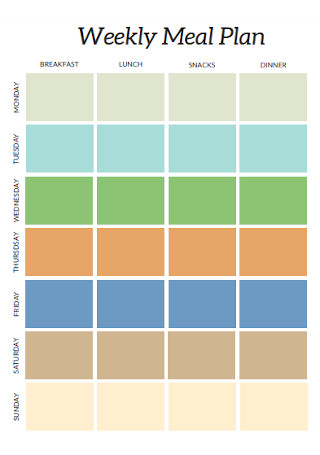
Standard Weekly Meal Plan
download now -
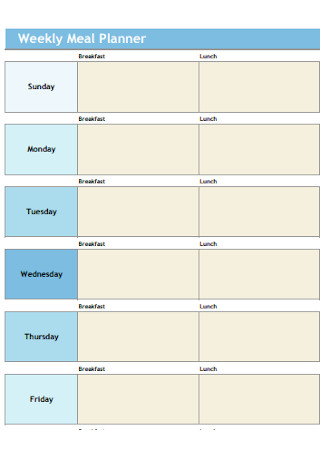
Basic Weekly Meal Planner
download now -
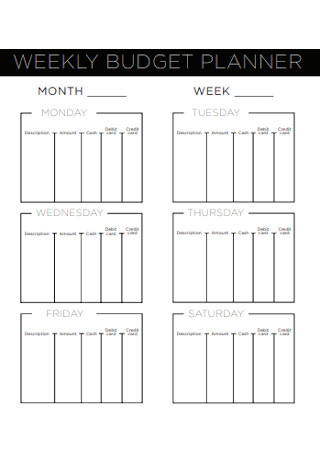
Weekly Meal Budget Plan
download now -
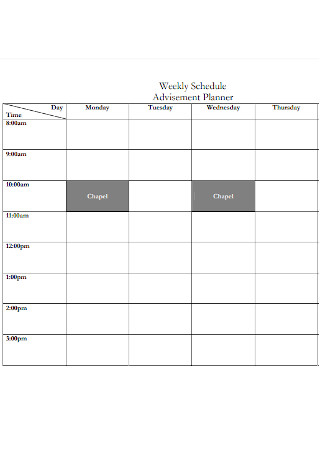
Weekly Meal Planner Schedule
download now -
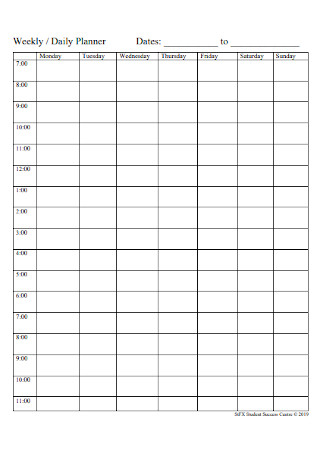
Weekly Daily Meal Planner
download now -
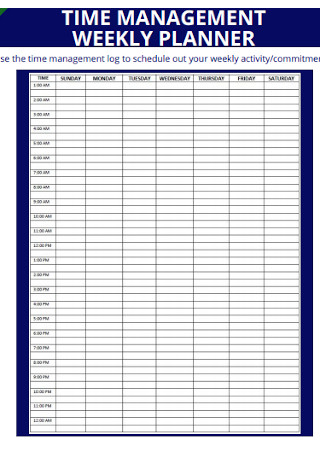
Weekly Management Meal Planner
download now -
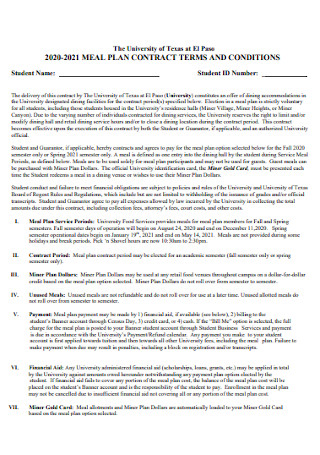
Weekly Meal Planner Contract
download now -
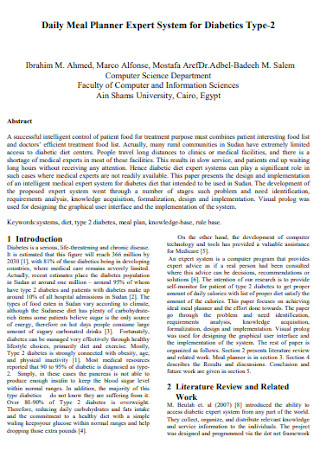
Weekly and Daily Meal Planner
download now -
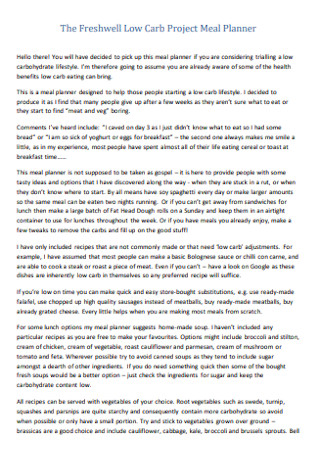
Project Meal Planner
download now -
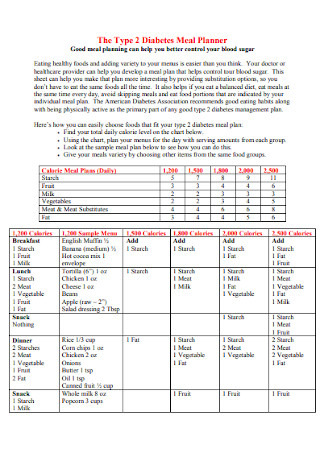
Diabetes Weekly Meal Planner
download now -
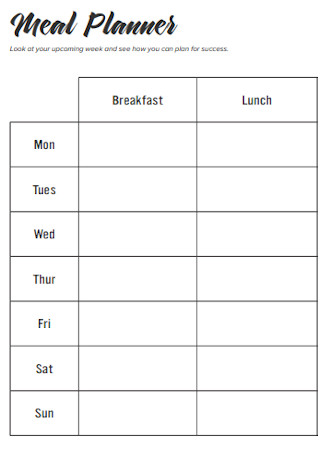
Simple Weekly Meal Planner
download now -
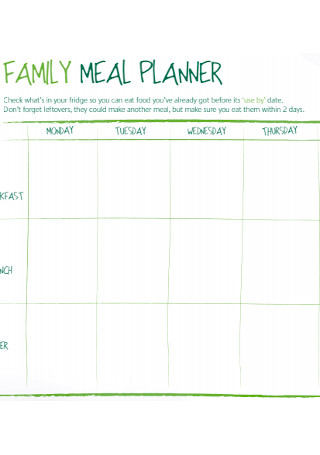
Family Weekly Meal Planer
download now -
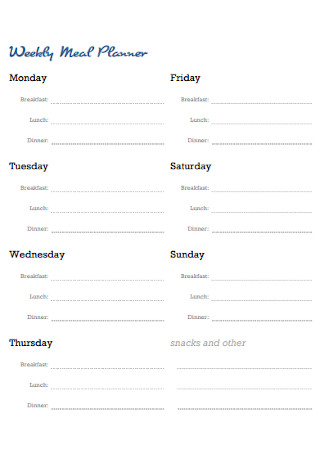
Weekly Meal Planner Example
download now -
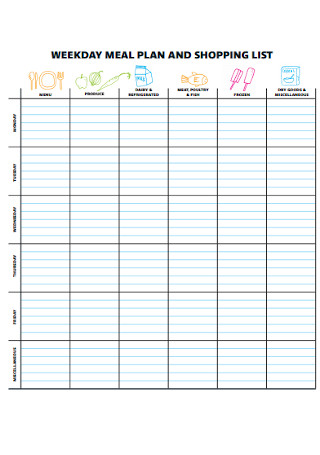
Weekly Meal Plan and Shopping List
download now -
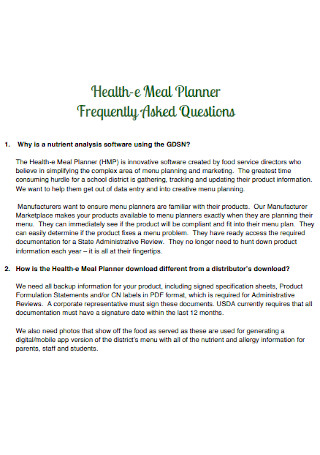
Weekly Health Meal Planner
download now
What Is a Weekly Meal Planner?
When you hear the word “meal planner”, it doesn’t talk about a person you hire to plan out your weekly meals. However, the name itself still suggests that it is a list or a chart of the meals you are planning to eat daily for the week. It also divides your meals into breakfast, lunch, dinner, and snacks. There are also some meal planners that you can add up your groceries for your consumption of the week.
Lots of people include planners in their daily lives as it reminds them daily of their appointments and schedules. According to Statista’s Statistics, approximately 342.7 million U.S. dollars of total sales of the appointment books and paper planners in the United States in 2016. If you are having trouble thinking about what to eat for the week, then you should consider making a planner. The sample templates above are ready-made planners for you to download in any file format you desire.
What Are the Components of the Weekly Meal Planner?
A weekly meal planner should compose of four main categories which are breakfast, lunch, dinner, and snacks. There are also a lot of options whether you include it in your planner or not as what you preferred more. These can even serve as a grocery list of sorts and as reminders that are related to your daily meals which will be discussed below.
The component of the Weekly Meal Planner doesn’t limit to these six, but if you think of anything that you want to include, feel free to do it. No one is stopping you. Now that you have learned about the components, let us now proceed to the steps and tips on how to make a weekly meal planner.
How to Make a Weekly Meal Planner?
If you want to make a weekly meal planner ahead, then this step-by-step guide will be a great help for you. You should also heed our advice as we give you helpful tips.
Step 1: List Down a Variety of Meals
Most of us have likes and dislikes when it comes to food and some of us have allergens that are found in food so we have to avoid them. The first step you should do is to list down all the meals you want to eat for the week. Make sure that all of them are enough for your budget for the week. If you are having a healthy lifestyle, make sure to exclude those foods that are not healthy such as junk foods. Afterward, search the ingredients of every meal you listed and make sure to delete the foods that contain your allergen.
Note: If you are not living alone or the meal planner also includes other individuals such as your family, make sure to think of them and plan your meals with them too. You might like your planned meals, but they might dislike some of them.
Step 2: Decide on Your Menu
Every day, there will be three important meals—breakfast, lunch, and dinner. Choose three of the meals listed on the first day, then another three on the next day, and so on. On your paper or in an editing software application, divide the page into a 3×7 grid or create a 3×7 table. Then, label each row with the days in a week and columns with the three meals. The next thing to do is to write each cell with the foods you decided to eat accordingly.
Aside from the three meals, there will always be snacks in each interval. Make sure to also include light snacks or heavy snacks if you are so exhausted from your daily routine but not too much that can lose your appetite for the next meal. To insert your snacks, you can put another or two columns in between meals. To hasten your work, you can also download a printable and ready-made template that you can choose from here on our site. It’s easy, hassle-free, and all you have to do is fill in the blanks.
Step 3: List Down Your Groceries
Search for the ingredients of each food, and add it all to your grocery lists. Ingredients are not the only ones you need to include in your grocery list, but also some produce, drinks, or anything that you lack from your kitchen which you also need daily. You should also include but not necessarily their prices which you can check on the receipt from your previous grocery. You also need to write their quantities of each item. This way, you can total the amount on your grocery list and make sure it falls into your budget. If it’s too much, remove those not-so-important ones. On your paper or page, you can add another grid or table on the side to insert the grocery lists. Depends on your preferences, you can also add some notes that you don’t want to forget.
Step 4: Edit and Print It
Review your work as you will need it to check up on the mistakes and misplaces. If there are, make sure to edit it immediately. If none, then proceed to design. Designing your meal planner adds color to it. Make it as simple and organized as you want it. Add some colors to make it cute or do a black and white to make it cool. It is really up to your preferences. Then, print it in suitable paper size. Check the printout afterward if there is an error or a fuzzy part of the paper and print it all over again if there are any. If none, then proceed by posting it anywhere in the kitchen as long as you can quickly notice it. You can put it on the door of your fridge or near the kitchen counter.
Step 5: Follow Your Schedule
Now that you are done with making your planner, make sure to follow your meal plan according to the schedule. Go to the grocery store once every week and buy those in your grocery lists. Make sure to avoid impulse buying or selecting items into the cart that are not on the list. This will lead you to spend more money and mislead you from saving money. This is very important when you go grocery shopping. Also, make sure that all items on your grocery lists are not available in your pantry, fridge, and freezer. Cross out the items that you are already in your cart and proceed for what’s left.
Step 6: Eat and Repeat
Now that you are done making your weekly meal planner and gone to the grocery, all that’s left is to prepare your meal, serve, and enjoy. After the week has passed, make sure to repeat the steps again for another week. Make sure to also check out our editable and downloadable templates and not just this weekly meal planner, but also other categories such as event checklist, fitness schedules, and many more.
Why Paper Planners Are Much Better Than Digital Ones?
Now that it is the digital age where gadgets, computers, and high-technologies are all around that you can see everywhere you look, and digital planners are also a trend. However, there are still those who remain in using paper planners rather than digital ones. Paper planners and calendars are actually better than digitals because of these benefits below.
You are less distracted. You can always bring your phone wherever you are and set reminders for your plans and schedules which is more convenient. However, the tricky part is you get distracted easily. Distraction is the ultimate foe you will ever face. Whenever there’s a ring and notifies you about a new post of your favorite celebrity, you tend to scroll down until you realize you wasted a long time scrolling through social media and forget what you should do. Paper planners on the other hand have the advantage that can also remember things better.
There are many studies that prove once you write down your goal, your brain will pay attention to it and remembers. According to an article in Luxafor, based on the Dominican University of California study, people who wrote down their goals and shared them with others, and maintained accountability for their goals were 33% more likely to achieve them, than those who just keep their goals in minds.
FAQs
Can you meal prep for 7 days?
Yes, the well-stored cooked meal prep can actually last in the fridge for up to 7 days. To help you keep your food as fresh as possible, you should consider prepping your meal twice a week.
What is the best meal planner app?
The Healthline suggests 10 apps of the best meal planning apps available today. These are the Mealime, Paprika, PlateJoy, Plan to Eat, Yummly, Make My Plate, Pepperplate, Prepear, Lose It! App, and DietWiz. These apps are available and downloadable on both iOS and Android platforms.
What are the 6 principles of good menu planning?
Six principles are based on planning household meals to improve food quality. The six of them are adequacy, balance, calorie (energy) control, nutrient density, moderation, and variety.
Planners are what we really need in our daily life to remind us what to do and keeping us from astray. Aside from the weekly meal planners, there are other types of planners that you can use in your daily lives. Here on our site, you can check thousands of ready-made templates that are downloadable in any available file format.